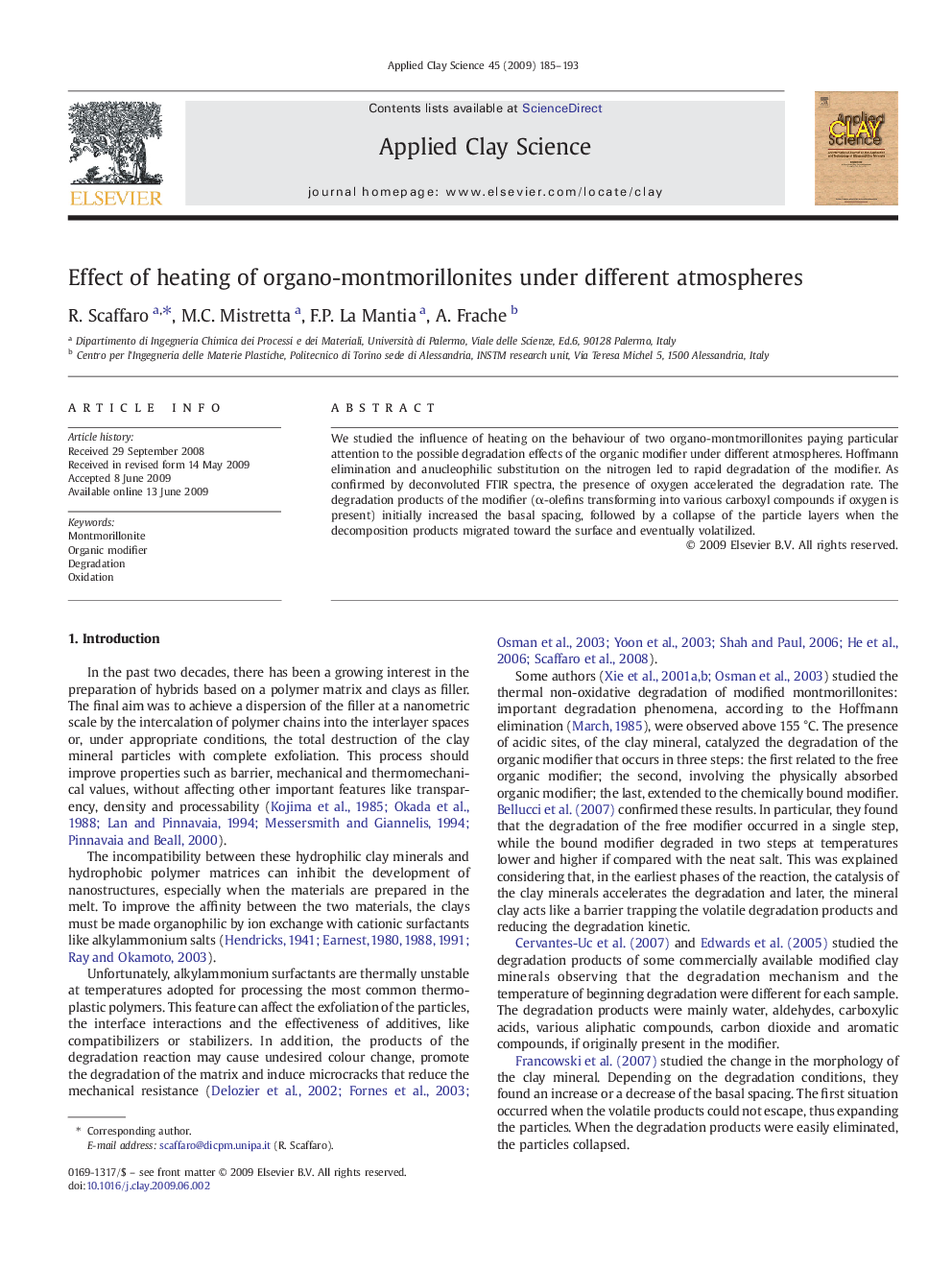| Article ID | Journal | Published Year | Pages | File Type |
|---|---|---|---|---|
| 1696107 | Applied Clay Science | 2009 | 9 Pages |
Abstract
We studied the influence of heating on the behaviour of two organo-montmorillonites paying particular attention to the possible degradation effects of the organic modifier under different atmospheres. Hoffmann elimination and anucleophilic substitution on the nitrogen led to rapid degradation of the modifier. As confirmed by deconvoluted FTIR spectra, the presence of oxygen accelerated the degradation rate. The degradation products of the modifier (α-olefins transforming into various carboxyl compounds if oxygen is present) initially increased the basal spacing, followed by a collapse of the particle layers when the decomposition products migrated toward the surface and eventually volatilized.
Related Topics
Physical Sciences and Engineering
Earth and Planetary Sciences
Geochemistry and Petrology
Authors
R. Scaffaro, M.C. Mistretta, F.P. La Mantia, A. Frache,
